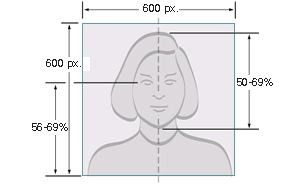How to use the Freedom of Information Act to request a copy of your A-File (or Alien File) from Immigration to see all documents and other information that the U.S. Government has regarding your past immigration filings, entries, stops by immigration, How to File With USCIS How to File With CBP How to File With EOIR FOIA Reports The DHS Privacy Office published the Annual FOIA Report and the Chief FOIA Officer Report. Annual FOIA Reports – Includes Component-specific and Department-wide data on FOIA processing, including the number of FOIA requests received and processed, average response times, and backlogs. Chief FOIA Officer Reports – Documents actions taken by the Department to advance transparency and to ensure DHS effectively administers FOIA. INFORMATION ABOUT THE FREEDOM OF INFORMATION ACT MORE INFO USCIS FOIA REQUEST Completing Form G-639 You must complete a Form G-639 . Type your responses or write them in black ink. If you do not know the information requested, the request could be delayed or the documents provided in response to the request could be incomplete. It should be self-explanatory for the most part but you can find step-by step guidance for completing the form below. A. Part 1: Type of Request Item 1a – b: Check the box that describes the request type. You should only check one box. Part 2: Requester Information Item 1: Check the Yes box if you are requesting your own records. Attorneys or representatives who are filling out the G-639 on behalf of their clients should check the No box. In these cases, the attorney is the requester, or the requester’s representative. If you are seeking your own records, skip the remainder of the questions in Part 2 (items 2a – 7b). Requesters seeking records on behalf of someone else should complete all of Part 2. Items 2.a. – 2.c. Representative Role to the Subject of Record In this item, specify whether you are an attorney, accredited representative, or family member. The 6/20/19 version of this form only allows for these three options, with no box for “other.” However, there is nothing in the statute that restricts FOIA requests to someone who is related to or represents the subject. If an individual is filing a FOIA request in a different capacity, she may want to submit a letter request instead of using the G�639 for this reason. Items 4.a. – 4.c. Requester’s Full Name Enter the full legal name of person requesting the file. Items 5.a. – 5.i. Requester’s Mailing Address ✓ In Care of Name (if any): Write the name of the person or agency receiving the documents, if someone other than the requester. ✓ Street Number, Street Name, City, State, Zip Code: Write the full address of the requester. The address can be either a mailing address (including a post office box) or a residential address. If the requester is the same person as the subject, we strongly recommend using a mailing address instead of a residential address. ✓ Province: If the mailing address is within the United States then in the province box write “N/A.” If the mailing address is outside the United States and the country uses the province system, then write the name of the province where correspondence should be delivered. ✓ Postal Code: If the mailing address is within the United States, then write “N/A” in the postal code box. If the documents will be mailed to a country that uses the postal code system, then write the postal code where correspondence should be delivered. ✓ Country: Write the name of the country where the mailing address is located. If the address is within the United States, then write, “United States.” Items 6. – 8. Requester’s Contact Information✓ Requester’s Daytime Telephone Number: Write the requester’s telephone number where she can be reached. ✓ Requester’s Mobile Telephone Number (if any): Write the requester’s cell phone number if it is different from the daytime phone number. ✓ Requester’s Email Address (if any): Write the requester’s email address, if she has one. To avoid delays caused by communication problems, include only telephone numbers that are regularly checked and not likely to change in the foreseeable future. If including an email address, only include one that is regularly checked. Items 9.a. – 9.b. Requester’s Certification By signing, the requester agrees to pay all costs for the search, duplication, and review of the documents up to $25.00, when applicable. DHS will not charge for the first two hours of research or the first 100 pages copied. Requester will be notified in advance if there will be any charges. See § 3.7. ✓ Requester’s Signature: The requester should sign her complete name here with the date. A stamped or typed name in place of a signature will not be accepted. Persons representing the subject and signing the form as the requester should include a completed Form G-28, Notice of Entry of Appearance as Attorney or Accredited Representation. Part 3: Description of Records Requested Item 1: Purpose This portion is optional, but specificity can help identify the record needed and speed up the response in some instances. Providing a general purpose may assist DHS in locating the file. It is best to be specific, but do NOT reveal anything about immigration strategy or any facts that the subject does not want the government to know. For example, if seeking information about whether the government has any evidence that the subject may have used a false document when they applied for an immigration benefit, do not disclose this possibility on the FOIA request by writing that the purpose is to search for records related to the subject’s use of fraudulent documents. Instead, write something simple, such as “requesting immigration records for personal review.” Items 2.a – 2.c: Full Name of the Subject of Record✓ Family Name – Write the subject’s current last name. ✓ Given Name – Write the subject’s current first name. ✓ Middle Name – Write the Subject’s current middle name. Items 3.a – 4.c: … Read more


